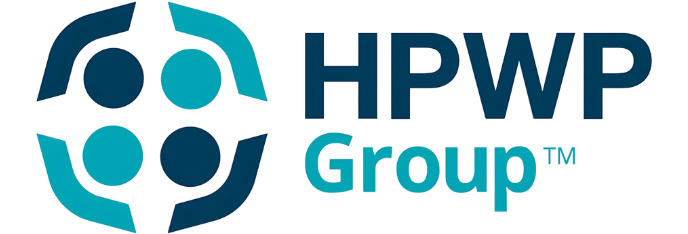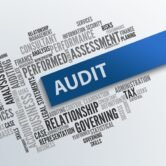Why Is Strategy Important for Employee Engagement?

Employee engagement has transformed from a pleasant HR effort to an essential business area, which directly influences output, earnings, keeping employees, and brand perception. However, many organizations still view engagement as a set of separate actions — an annual survey, a team activity day, a motivational speaker — instead of as a full, data-informed, sustained plan. When engagement is addressed strategically, it moves from being an occasional morale lift to a constant competitive edge.
1. Strategy Aligns Engagement With Business Goals
A clear, properly communicated strategy compels leaders to tie engagement programs to quantifiable company goals: increased revenue, higher customer satisfaction, faster innovation, improved safety, or positive social impact. Without this connection, engagement programs could become optional, and they’ll be the first things cut when budgets are reduced.
- Common Goal: When employees grasp how their tasks contribute to the company’s vision, they’re 3–4 times likelier to show high levels of engagement.
- Key Investments: We focus resources on programs that directly boost our key performance indicators (KPIs), based on clear strategy, rather than on things that just seem flashy or trendy.
- Leadership accountability: Key performance indicators like engagement scores, employee turnover, or productivity figures can be integrated into executive scorecards and manager dashboards, thus maintaining leadership attention.
2. Strategy Turns Data Into Continuous Improvement
Employee engagement is fluid: how people feel shifts in response to new leaders, economic downturns, procedural adjustments, or workplace design. A successful plan includes regular evaluation, finding the underlying reasons for issues, and testing changes in small stages before rolling them out fully, allowing the company to adapt rapidly to challenges.
- Tracking Frequency: We use quarterly pulse surveys, analyze exit interview data, and monitor collaboration tool conversations to build a dynamic understanding of engagement.
- Insight Overload Prevention: A documented framework helps teams distinguish noise from signal and choose two or three priority themes each cycle.
- Closed-Loop Feedback: Employees who see their input lead to action experience a 40 % lift in commitment, fuelling a virtuous cycle of candour and improvement.
3. Strategy Strengthens Culture Consistency
Although culture naturally arises from common narratives and actions, a strategy defines the desired standards and ensures they are consistent with workforce growth, mergers, and distributed teams.
- Translating values: Declared principles (like “customer focus”) transform into actionable conduct (for example, “Each sprint review includes a customer present”).
- Fairness Worldwide: Shared values enable both a Mumbai engineering team and a Berlin sales group to feel equally included, even with differing local customs.
- Onboarding Strategy: This tactical guide delivers new employees with routines, vocabulary, and examples of achievement from the start, accelerating their path to becoming integrated.
4. Strategy Clarifies Roles and Ownership
Employee engagement exists in the space shared by HR, immediate supervisors, and upper management. A strong plan specifies the responsibilities for each party.
- Executives champion purpose, allocate resources, and model behaviours.
- People Leaders translate company vision into team-level goals, provide coaching, and recognise contributions.
- HR/People Ops curate tools, analytics, and programs, serving as architects rather than sole owners.
- Employees co-create the culture by offering feedback, mentoring peers, and proposing innovations.
Clearly defined responsibilities prevent projects from getting stuck, and people see how their actions affect participation.
5. Strategy Future-Proofs Engagement Efforts
The work environment is transforming, influenced by AI assistance, blended work arrangements, and evolving employee desires concerning adaptability, meaning, and professional advancement. A proactive plan:
- Scans Trends: Competitive benchmarking and scenario planning guard against complacency.
- Builds Agility: Modular programs (micro-learning, flexible benefits, internal gigs) adapt quickly to market or workforce changes.
- Invests in Skills: Continuous development pathways help employees stay employable and engaged—even as roles evolve.
6. Strategy Boosts Employer Brand and Talent Magnetism
Cultures with high engagement draw in top talent – and the word quickly travels through platforms like Glassdoor, LinkedIn, and former employee networks. A set, documented plan is:
- Signals Intent: Prospective hires trust companies that publicly articulate how they nurture people.
- Provides Proof: Metrics (eNPS, internal promotion rates, DEI progress) and storytelling (employee spotlights) reinforce credibility.
- Reduces Hiring Costs: Engaged employees become brand advocates, driving up to 50 % of referrals and lowering cost-per-hire.
7. Building an Effective Engagement Strategy: A Practical Blueprint
- Diagnose the Current State
- Combine quantitative (survey scores, turnover, absenteeism) and qualitative (focus groups, skip-level interviews) data.
- Segment by role, region, tenure to unearth granular insights.
- Define Success Metrics
- Select no more than 3–5 key indicators tied to business outcomes (e.g., 15 % lift in productivity, 10 % drop in regrettable churn).
- Establish baselines and set time-bound targets.
- Prioritise High-Impact Levers
- Use correlation analysis to pinpoint factors most predictive of engagement in your context— e.g., career growth, recognition frequency, psychological safety.
- Scope initiatives (manager enablement, mentorship programs, flexible scheduling) that directly address those levers.
- Assign Ownership and Resources
- Draft a RACI (Responsible, Accountable, Consulted, Informed) matrix covering all initiatives.
- Secure budget and executive sponsorship up front.
- Communicate the Roadmap
- Launch with a transparent CEO town-hall and follow with multimedia updates (infographics, podcasts, intranet threads).
- Equip managers with talking points and FAQs to localise the message.
- Execute, Measure, Iterate
- Pilot initiatives in select teams, gather rapid feedback, refine, then scale.
- Report progress at quarterly business reviews; celebrate quick wins and adjust where momentum lags.
- Embed into Leadership DNA
- Incorporate engagement metrics into performance reviews and bonus schemes.
- Offer leadership development that blends hard skills (coaching, feedback) with mindset shifts (servant leadership, growth mindset).
Final Thoughts
Employee engagement without a plan can feel like random acts—nice but shallow. A strategy turns engagement into a focused, trackable route to lasting top performance. It directs resources to impactful actions, holds leaders responsible, and adjusts to the changing workplace.
When engagement is treated as a strategic need—tied to company objectives, data-driven, and embraced by all levels—businesses spark extra effort and build a strong, lasting employer brand.
In brief, a strategy connects the daily experiences of employees with the long-term vision of the company. Create that connection purposefully, and see engagement change from an HR task to the very core of your business.










